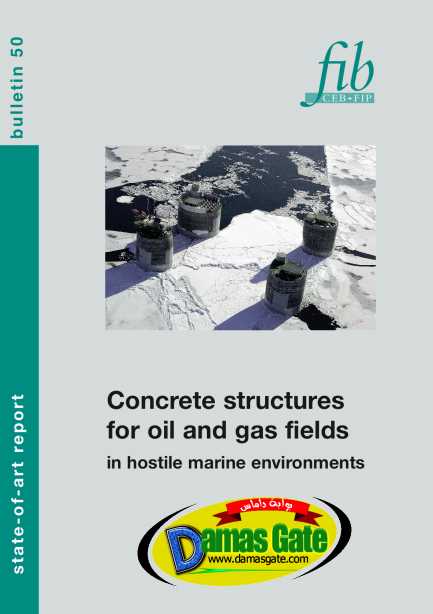FIB-50 Concrete structures for oil and gas fields

Preface
Since the 1970s a considerable number of large prestressed concrete structures have been delivered to the petroleum industry for offshore production of oil and gas in harsh and demanding environments. After some years with little development activity, there is a renewed interest in robust structures for the Arctic environment, for Liquefied Natural Gas (LNG) terminals and for special floating barges and vessels. Currently, concrete solutions are being considered for projects north and east of Russia, north of Norway and offshore Newfoundland, among others.
Concrete is also in increasing demand in built up coastal areas for a variety of purposes such as harbour works, tunnels and bridges, cargo terminals, parking garages and sea front housing developments where durability and robustness are essential.
In 2006 fib (fédération international du béton/International Federation for Structural Concrete) established a Task Group with a mandate to gather the experience and know-how
pertinent to the development, design and execution of offshore concrete structures, and to elaborate on the applicability of concrete structures for the Arctic environments. The findings of the task group are presented in this present State-of -Art Report.
The report is based on experience gained from the design, execution and performance of a number of offshore concrete structures around the world and in particular in the North Sea. Ongoing inspections have shown excellent durability and structural performance, even in structures that have exceeded their design lives, in conditions often characterized by extreme wave loads, freezing conditions, hurricane force winds and seismic actions. This forms the “background” for discussing the applicability of concrete structures for the Arctic regions.
Although to a large extent dedicated to oil- and gas- related structures, the report will also be of relevance to other marine applications where the same design principles, material selection criteria and construction methods apply.
This State-of-Art report is not in itself a code, nor is it a textbook. Rather, extensive reference is made to proven and readily available design codes and construction guides, as
well as relevant papers and proceedings and other fib publications. Twenty-three engineers, carefully selected from one or several of the 49 major offshore
concrete projects around the world, have participated in fib Task Group 1.5. The Task Group wishes to thank the oil companies, contractors, consultants and
academics who contributed material and pictures.
Download
*